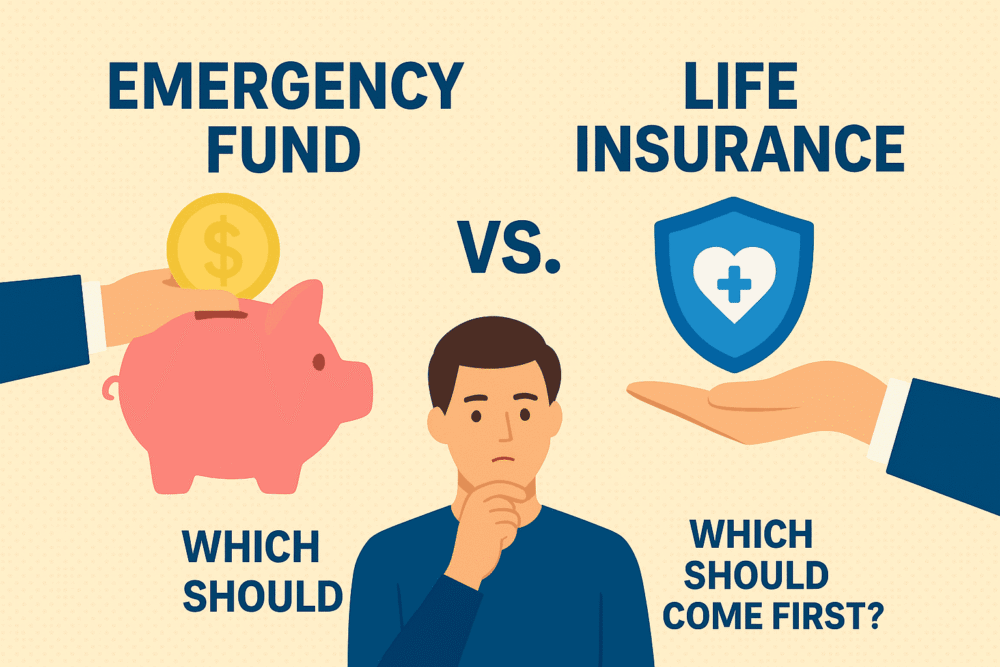When it comes to personal finance, two essentials often come up: building an emergency fund and getting life insurance. But ask 10 people which one to prioritize first, and you’d get 10 different answers.
In this article, we’ll clarify the difference, explain why the order matters, and help you make the best decision for your financial security—especially for Filipinos.
What’s the Difference?
Emergency Fund
A stash of easily accessible cash—usually 3 to 6 months’ worth of expenses—set aside for sudden needs like medical emergencies, job loss, or urgent repairs. It’s your financial buffer in times of crisis.
Life Insurance
A long-term financial protection for your family if something happens to you. In the Philippines, term life insurance is the most cost-effective option. (You might also want to read why you should stop treating VUL as an investment: Stop Relying on VUL Insurance as Investment.)
Why You Should Do One Before the Other
- Emergency Fund = Protects Your Present Self
Life has unexpected twists. Without a fund, you’ll likely resort to high-interest loans, defeating the purpose of insurance protection. - Life Insurance = Safeguards Your Family’s Future
If your income supports others, insurance ensures they’re protected if you’re gone. But premiums shouldn’t derail your finances.
Bottom line: Build your emergency fund first, then secure reputable term life insurance. That way you’re covered both now and later.
How to Build the Right Sequence
- Start with a Mini Fund
Aim for ₱20,000–₱50,000 as your initial emergency fund. - Grow it Consistently
Target 3–6 months of expenses—great strategies for savings are covered in my article Emergency Fund in the Philippines. - Once Fund is Solid, Buy Insurance
Begin with pure term life insurance—get the coverage you need without unnecessary add-ons. - Build Both Over Time
Increase your emergency savings and consider adding insurance riders only when you’re financially ready.
Real-World Filipino Scenario
Filipino families often see life insurance agents emphasizing policies as foundational—but without an emergency fund, missed premiums can lead to lapses or policy cancellations.
An emergency fund ensures you can keep paying premiums even during tough months. It’s not just financial discipline—it’s smart strategy.
Summary Table: What Comes First?
| Financial Priority | Purpose | Importance at This Stage |
|---|---|---|
| Emergency Fund | Handle immediate financial emergencies | Essential first step |
| Term Life Insurance | Secure family’s future in the event of death | Next, once your emergency fund is stable |
| Other Insurance/Riders | Add-ons for disability, health, etc. | Consider later |
Blogger’s Corner
I always say: “A term life policy without an emergency fund is a house without a foundation.” If you skip building your emergency cushion, even a robust insurance plan can collapse under real-life financial pressures.
So emergency fund first, then life insurance—that is the smart, stress-free sequence.
And if you already have VUL or complex insurance, it might be time to rethink those as investments. You can start by reading Why VUL is a Scam.
